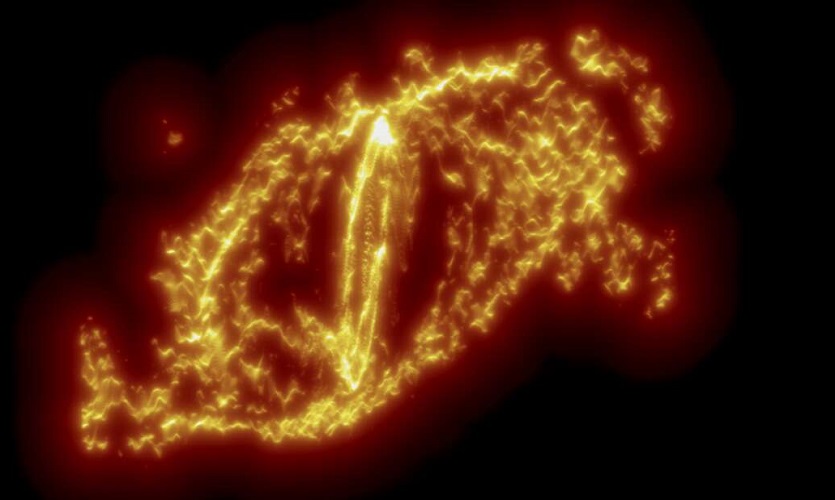The cosmic commute towards star and planet formation

The flow of gas in the Universe by which stars and planets are formed is a process controlled by a cascade of matter that begins on galactic scales.
Scientists from the Max Plank Institute for Astronomy and Liverpool John Moores University used new measurement techniques to explore how molecular gas clouds travel along networks of filamentary gas lanes towards the congested centres of gas and dust where they are compressed into stars and planets.
And they found that a hierarchy of gas movements is "dynamically interconnected" like the movement of commuters moving to work on a busy day.
Their results are published in Nature Astronomy.
Molecular gas in galaxies is set in motion by physical mechanisms such as galactic rotation, supernova explosions, magnetic fields, turbulence, and gravity, shaping the structure of the gas. Understanding how these motions directly impact star and planet formation is difficult, because it requires quantifying gas motion over a huge range in spatial scale, and then linking this motion to the physical structures we observe.
A team of researchers led by Jonathan Henshaw at the MPIA in Heidelberg set out to measure gas motions using observations of changing light frequencies in the Milky Way and a nearby galaxy. By applying novel software designed by Henshaw and Ph.D. student Manuel Riener (a co-author on the paper; also at MPIA), the team were able to analyse millions of measurements.
They found that cold molecular gas motions appear to fluctuate in velocity, reminiscent in appearance of waves on the surface of the ocean.
Professor Steve Longmore, co-author of the paper, based at Liverpool John Moores University, said: "What surprised us was how similar the velocity structure of these different regions appeared. It didn't matter if we were looking at an entire galaxy or an individual cloud within our own galaxy, the structure is more or less the same."
The team identified three filamentary gas lanes, which, despite tracing vastly different scales, all seemed to show structure that was roughly equidistantly spaced along their crests, like beads on a string, whether it was giant molecular clouds along a spiral arm or tiny "cores" forming stars along a filament.
"The periodic spacing of the giant molecular clouds on large-scales or individual star-forming cores on small-scales is probably the result of their parent filaments becoming gravitationally unstable. We believe that these oscillatory flows are the signature of gas streaming along spiral arms or converging towards the density peaks, supplying new fuel for star formation," explained Henshaw.
In contrast, the team found that the velocity fluctuations measured throughout giant molecular clouds, on scales intermediate between entire clouds and the tiny cores within them, show no obvious characteristic scale. Diederik Kruijssen, co-author of the paper based at Heidelberg University explains: "The density and velocity structures that we see in giant molecular clouds are ‘scale-free', because the turbulent gas flows generating these structures form a chaotic cascade, revealing ever smaller fluctuations as you zoom in – much like a Romanesco broccoli, or a snowflake. This scale-free behaviour takes place between two well-defined extremes: the large scale of the entire cloud, and the small scale of the cores forming individual stars. We now find that these extremes have well-defined characteristic sizes, but in between them chaos rules."
"Picture the giant molecular clouds as equally-spaced mega-cities connected by highways," says Henshaw. "From a birds eye view, the structure of these cities, and the cars and people moving through them, appears chaotic and disordered. However, when we zoom in on individual roads, we see people who have travelled from far and wide entering their individual office buildings in an orderly fashion. The office buildings represent the dense and cold gas cores from which stars and planets are born."


